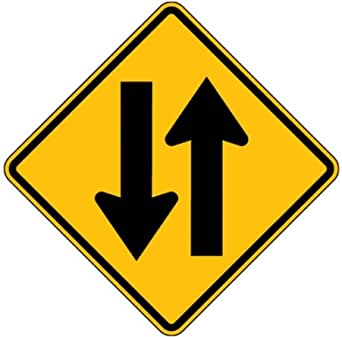|
SỞ GD – ĐT THÀNH PHỐ HỒ CHÍ MINH ĐỀ THI THỬ SỐ 55 |
KỲ THI TUYỂN SINH VÀO LỚP 10 Thời gian làm bài: 90 phút |
Họ và tên học sinh:.................................................................................................................................................
- Choose the word/ phrase (A, B, C or D) to indicate the word whose underlined part differs from the other three in pronunciation in each of the following questions (0.5 pts)
- Choose the word/ phrase (A, B, C or D) to indicate the word that differs from the other three in the position of the primary stress in each of the following questions (0.5pts)
- A. nomination B. pollution C. innovation D. celebration
- A. volunteer B. considerate C. effective D. resource
- MULTIPLE CHOICES: Choose the word/ phrase (A, B, C or D) that best fits the space in each sentence (2.5 pts)
A. got B. reached C. arrived D. came
A. dormitory B. mobile room C. hotel D. private room
A. natural disasters B. nuclear power C. solar energy D. natural resources
A. rain B. to rain C. raining D. be rain
A. because B. and C. so D. therefore
A. would offer B. have offered C. will offer D. are offering
A. to go B. going C. should go D. should going
A. with B. about C. at D. that
A. Good idea. B. Ok. Why not? C. Thanks D. You're welcome.
- CAUTION SIGNS- WARNINGS: Look at the signs. Choose the best answer (A, B, C or D) for each sign (0.5 pts)
|
A. Merging traffic coming from the left. |
|
- GUIDED CLOZE: Choose the word/ phrase (A, B, C, or D) that best fits the space in the following passage (1.5 pts)
- A. a film B. an online social network C. a software D. a TV program
- A. wide B. big C. tall D. long
- A. quite B. hardly C. fair D. most
- A. by B. on C. from D. in
- A. to unlock B. to post C. to create D. to lock
- A. them B. other's C. your D. each other's
- READING COMPREHENSION: Read the passage, and then do the tasks that follow. (1.5 pts)
Decide if these statements are TRUE or FALSE.
- Most people own a smartphone. _________________
- The first TVs appeared in color. _________________
- You can operate the TV with your voice. _________________
- You can use your body movements to control the volume on the TV. _________________
Choose the word/ phrase (A, B, C or D) that best fits the space.
A. The development of TV B. Communication on TV
C. The development of smartphones D. Communication on smartphones
A. We will not need to watch TV. B. We will be able to turn on or off a TV by a remote control.
C. We will be able to smell what's on TV. D. We will be able to watch TV when we are hungry.
- WORD FORMS: Use the correct form of the word given in each sentence. (1.5 pts)
- The hurricane brought total _____________________________________________ to the city. (destroy)
- A Vietnamese firm makes ____________________ rice-flour straws to help protect environment. (eat)
- Son Doong is a beautiful place to which many _________________________________ go from all over the world. (sightsee)
- Her ideas were clear and ________________________________________________ presented. (logic)
- Facebook, Twitter, and Instagram are examples of _______________________________ media. (act)
- He's color-blind and can't ____________________________________________ the difference between red and green easily. (distinguishable)
- SENTENCE REARRANGEMENT (0.5 pt.)
- SENTENCE TRANSFORMATION (2.0 pts)
|
SỞ GD – ĐT THÀNH PHỐ HỒ CHÍ MINH ĐỀ THI THỬ SỐ 55 |
KỲ THI TUYỂN SINH VÀO LỚP 10 Thời gian làm bài: 90 phút |
I. Choose the word (A, B, C or D) whose underlined part is pronounced differently from the others.
- A. wanted /ɪd/ B. liked /t/ C. visited / ɪd / D. decided / ɪd /
- A. acquaintances /ɪz/ B. replaces /ɪz/
C. appliances /ɪz/ D. persuades /z/
II. Choose the word (A, B, C or D) whose main stress is placed differently from the others in each group.
- A. nomination / ˌnɒmɪˈneɪʃən / B. pollution / pəˈluːʃən /
C. innovation / ˌɪnəʊˈveɪʃən / D. celebration / ˌselɪˈbreɪʃən /
- A. volunteer /ˌvɒlənˈtɪə/ B. considerate /kənˈsɪdərɪt/
C. effective /ɪˈfektɪv/ D. resource /rɪˈsɔːs /
III. Choose the word / phrase (A, B, C or D) that best fits the space in each sentence.
- B. reached: Phân biệt reach/ get/ com/ arrive.
- Get / come + to [place]
- Reach + [place]
- Arrive + giới từ + [place] (giới từ này tùy theo nơi chốn)
Ví dụ: By the time we reach the resort, the rain will have stopped.
I arrived at the station (at là giới từ của station)
I arrived in the USA (in là giới từ của the USA)
I’m coming to the cinema.
- A. dormitory: Kiểm tra từ vựng: dormitory (kí túc xá), mobile room (nhà di động), hotel (khách sạn), private room (phòng cá nhân).
Dịch: Nếu bạn học tại Trung tâm Ngôn ngữ Brighton-Vương quốc Anh, bạn có thể sống trong ký túc xá trong khuôn viên trường.
- D. natural resources: Kiểm tra từ vựng: natural disaster (thiên tai), nuclear power (năng lượng hạt nhân), solar energy (năng lượng Mặt Trời), natural resource (tài nguyên thiên nhiên).
Dịch: Dầu là một trong nguồn tài nguyên thiên nhiên quan trọng nhất.
- A. off: Kiểm tra cụm động từ: turn off (tắt), turn on (bật), turn up (tăng âm lượng, xuất hiện), turn down (hạ âm lượng).
Dịch: Nhớ tắt vòi nước sau khi sử dụng.
- A. rain: Sau các động từ khiếm khuyết (will/would, can/could, may/might, shall/should,…) là động từ nguyên mẫu.
- C. so. Kiểm tra từ nối. Trước “therefore” là dấu châm hoặc chấm phẩy, trước “so” là dấu phẩy hoặc không có.
Dịch: Trời mưa to, nên tôi không thể đi xem phim với bạn được.
- C. will offer: Câu điều kiện loại 1: If HTĐ, S + will + V0 …
- C. should go: câu đề nghị:
S + suggest + (that) + S + (should) + V0 …
S + suggest + V-ing…
- B. about: worried + about sb/sth: lo lắng về ai/cái gì.
- C. Thanks: Câu hội thoại thực tế đáp lại lời khen.
IV. Choose the best answer (A, B, C or D) for the following picture or sign.
- Biển báo có nghĩa là:
- Hợp nhất giao thông đến từ bên trái
- Làn đường bên phải đóng phía trước
- Giao nhau với đường phía bên phải.
- Nhường đường cho xe đang chạy tới.
- Biển báo có nghĩa là:
- Giao thông di chuyển hai chiều
- Đường một chiều phía trước.
- Đường cao tốc có dải phân cách phía trước.
- Vùng vượt phía trước.
V. Choose the word (A, B, C or D) that best fits the blank space in the following passage.
- B. an online social network
- D. long
- A. quite
- C. from
- C. to create
- D. each other’s
Twitter là (17) một mạng xã hội trực tuyến cho phép người dùng gửi và nhận tin nhắn ngắn, được gọi là tweet. Tweet có thể (18) dài tối đa 140 ký tự. Giống như Facebook, Zalo hay Instagram, Twitter là (19) khá đơn giản và thuận tiện để sử dụng vì bạn có thể gửi tweet (20) từ máy tính hoặc thậm chí là điện thoại di động của mình. Tuy nhiên, bạn không thể đăng trạng thái dài hoặc ảnh hoặc video trên Twitter như bạn có thể làm với các mạng xã hội khác. Để gửi hoặc nhận tin nhắn, bạn chỉ cần (21) tạo một tài khoản trên Twitter.
Người dùng Twitter không thể thêm bạn bè với nhau. Họ chỉ có thể theo dõi những gì người khác đăng. Trong hầu hết các trường hợp, Twitter được tạo thành từ nhiều nhóm người nhỏ. Đôi khi chỉ họ mới có thể theo dõi chuyển động (22) của nhau. Bạn có thể đăng "Này, tôi đang đi đến quán rượu và tất cả bạn bè của bạn có thể đọc nó cùng một lúc."
VI. Read the passage, then decide if the statements that follow it are True or False.
- TRUE. Almost everyone has one these days.
- FALSE. From the first black and white TVs in the 1920s to flat screens today.
- TRUE. Instead, you can use voice control to turn the volume up or down and the TV on or off.
- FALSE. You can even use your body movements to surf the Internet.
- A. The development of TV
- C. We will be able to smell what's on TV.
VII. Use the correct form of the word given in each sentence
- Dấu hiệu: trước chỗ trống là tính từ “total”, sau chỗ trống là giới từ “to”, do đó chỗ trống là danh từ.
Đáp án: destruction.
- Dấu hiệu: Trước chỗ trống có động từ “make”, sau chỗ trống có tính từ “rice-flour (bột gạo)” và danh từ “straw (ống hút)”, do đó chỗ trống là tính từ.
Đáp án: edible (ăn được)
- Dấu hiệu: trước chỗ trống là lượng từ “many”, do đó chỗ trống phải là danh từ số nhiều đếm được gồm sightseer (người tham quan) và sightseeing (cuộc tham quan). Sau chô trống có động từ “go” dành cho người.
Đáp án: sightseers.
- Dấu hiệu: Sau chỗ trống là tính từ “presented”, do đó chỗ trống là trạng từ.
Đáp án: logically.
- Dấu hiệu: Trước chỗ trống có danh từ “media”. Do đó, chỗ trống phải là tính từ.
Đáp án: active.
- Dấu hiệu: trước chỗ trống là động từ “can’t”, do đó chỗ trống là động từ nguyên mẫu.
Đáp án: distinguish.
VIII. Put the words in the correct order to make meaningful sentences.
- You are advised to speak only English during the course.
Dịch: Bạn chỉ nên nói tiếng Anh trong suốt khóa học.
- I can’t find the book which Lan lent to me last week.
Dịch: Tôi không thể tìm thấy cuốn sách mà Lan đã cho tôi mượn tuần trước.
IX. Rewrite each of the following sentences in another way so that it means almost the same as the sentence printed before it.
- Viết lại câu ước với “wish”. Ước 1 điều không có thật ở hiện tại
S + wish(es) + (that) + Quá khứ đơn.
Đáp án: I wish I had time to go around the city.
- Viết lại câu với nghĩa không đổi.
Đáp án: You must shut down the computer before 9pm.
- Viết lại câu quá khứ đơn sang hiện tại hoàn thành.
S + last + V2 + … [mốc thời gian quá khứ]
S + have/has not + V3 +…+ since [mốc thời gian quá khứ]
Đáp án: He has not visited his home village since he was twenty.
- Viết lại câu điều kiện loại 1, diễn tả một việc có thể xảy ra.
Đáp án: Despite his broken leg, he managed to get out of the car.
Despite the fact that his leg was broken, he managed to get out of the car.

